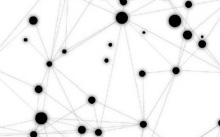The Object Oriented Web - Part 3 - Social Networks
Published 16 years ago by Manuel Vila
 Once again, the main idea behind the social network comes from a reversal process. We're dealing with an approach focused on the people (user-centric) and not on the applications allowing us to produce various data (text with blogs, pictures on Flickr, videos on YouTube, etc.). Rather than indicate to our contacts the numerous RSS feeds representing our "digital life", we are going to point at a unique address (our OpenID) whereby they will have access to any shared data. Even better, they will be able to add us in their contact list in order to automatically receive our new data (our "lifestreams"). To draw a parallel between an existing tool, adding an RSS feed to an aggregator like Google Reader comes down to adding a contact in our social network. But there is a major difference because this new approach simplifies things a lot while introducing many new fascinating possibilities.
Once again, the main idea behind the social network comes from a reversal process. We're dealing with an approach focused on the people (user-centric) and not on the applications allowing us to produce various data (text with blogs, pictures on Flickr, videos on YouTube, etc.). Rather than indicate to our contacts the numerous RSS feeds representing our "digital life", we are going to point at a unique address (our OpenID) whereby they will have access to any shared data. Even better, they will be able to add us in their contact list in order to automatically receive our new data (our "lifestreams"). To draw a parallel between an existing tool, adding an RSS feed to an aggregator like Google Reader comes down to adding a contact in our social network. But there is a major difference because this new approach simplifies things a lot while introducing many new fascinating possibilities.
Continue reading The Object Oriented Web - Part 3 - Social Networks


Recently Commented Blog Entries